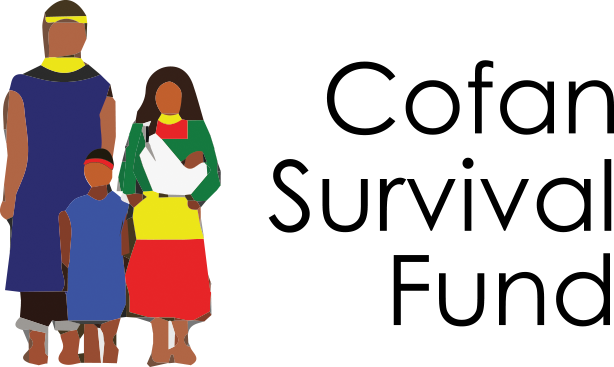Keeping the Cofan Park Guards Active
The Cofan Park Guard Program is still doing all it can to protect the more than one million acres of Amazonian and Andean forest that the Cofan Nation controls. As always, though, the program is experiencing real problems. First and foremost, the FSC needs money to keep the guards equipped and on the land, doing their job. Second, the continued effectiveness of the program depends upon maintaining a good relationship with the Ecuadorian Ministry of the Environment. Recently, Cofan leaders have experienced a number of bureaucratic hurdles, so they're heading up to Ecuador's capital city of Quito to get the government to listen to them and provide them with the support they need. According to Randy Borman, FSC Executive Director, a group of Cofan leaders will engage government officials next week. If the meeting doesn't work, the Cofan are prepared to head to Quito en masse for a full-scale protest. They've done it before, and they're prepared to do it again.
Seeing a Harpy Eagle Up Close
Last week, CSF board member Claire Nicklin had a chance to visit the Cofan community of Zábalo with Randy, other Cofan people, and a group of tourists. Claire wanted to get a sense of community needs and to find out how the CSF can help the community to improve its ecotourism operation. While going for a canoe trip on the Zábalo River, Claire got a chance to take a close look at a harpy eagle, the strongest eagle in the world and an important being in Cofan cosmology. Cofan people call the bird "con'sin pindo," or "woolly monkey eagle." The name refers to one of the harpy's preferred prey species. These magnificent animals have the strength to carry large mammals to distant sites, where they eat them themselves or feed them to their young. If you ever get a chance to visit Zábalo, maybe you'll get a chance to take a picture like this one, which Claire took!
Fighting for Cofan Land Rights
Outsiders often like to think that all indigenous Amazonian people live in harmony with each other, but the reality can be much more complicated. Recently, the Cofan have watched as another indigenous group--the Secoya--have tried to take control of part of the Cofan community of Zábalo's official territory. The area in question is along the Lagarto Cocha River, at the eastern edge of Zábalo's land near the Ecuadorian-Peruvian border. The Cofan have long been friends of the Secoya, but as unoccupied lands become less and less available in the region, it's becoming harder for the Secoya to find lands of their own. The FSC is working with Ecuador's Ministry of Environment to make sure that all Cofan lands remain Cofan lands--and that the Ecuadorian government can find a place for the Secoya without taking away from the Cofan. After all, the Cofan have been occupying and managing the land in question for decades, and they want to make sure it remains protected from all the forces that threaten to despoil it.



